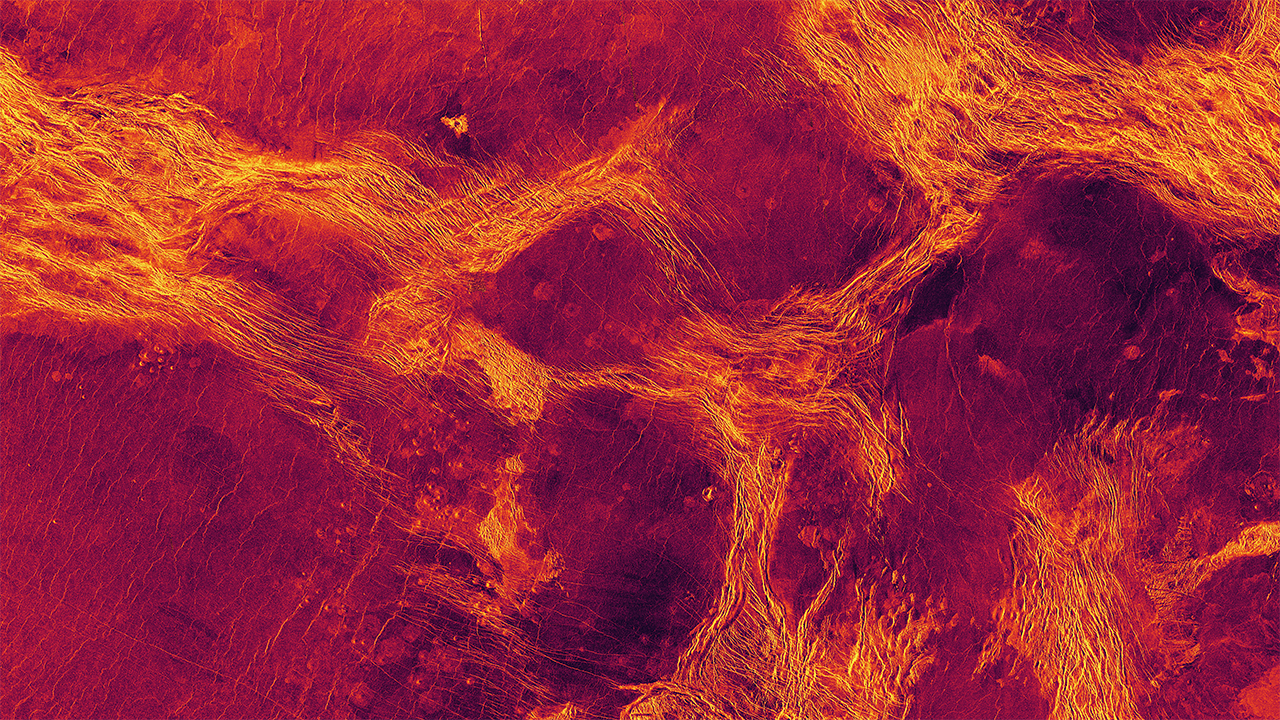Tectonic movements on Venus
Three missions will soon be visiting Venus. What is there to see there? Well, for example, something like tectonics, movements in the planet’s crust. Mars and Earth’s moon don’t have anything like that. But Venus does, as a paper now states. «We have identified a previously unrecognized pattern of tectonic deformation on Venus that is driven by internal motions just as it is on Earth,» says Paul Byrne, associate professor of planetary science at North Carolina State University and lead and co-lead author of the paper. «Although it’s different from the tectonics we currently see on Earth, it’s still evidence of internal motion expressed at the planet’s surface.»
The discovery is important because it has long been assumed that Venus has an immobile, solid outer shell, the lithosphere, just like Mars or Earth’s moon. In contrast, Earth’s lithosphere is broken into tectonic plates that slide against, apart and among each other on a hot, weaker mantle layer. Byrne and an international group of researchers used radar images from NASA’s Magellan mission to map the surface of Venus. Examining the vast Venusian lowlands that make up most of the planet’s surface, they saw areas where large blocks of lithosphere appear to have moved. As they did so, they apparently slid past each other, pushed together and rotated like broken pack ice on a frozen lake.
The team created a computer model of this deformation and found that the sluggish motion of the planet’s interior can explain the nature of tectonics at the surface. «These observations tell us that internal motions are driving surface deformation on Venus, much like on Earth,» Byrne says. «Plate tectonics on Earth is driven by convection in the mantle. The mantle is hot or cold in different places, it moves, and some of that motion is transmitted to the Earth’s surface in the form of plate motion. A variation also appears to be taking place on Venus. It’s not plate tectonics like on Earth – there are no huge mountain ranges or giant subduction systems forming here – but there is evidence of deformation from inner mantle flow, which has not yet been demonstrated on a global scale.»
The deformation associated with these crustal blocks could also indicate that Venus is still geologically active. «We know that much of Venus has been volcanically deformed over time, so some parts of the planet may be very young geologically,» Byrne says. «But some of the blocks formed and deformed in young lava plains, which means the lithosphere didn’t break down until after those plains were deposited. This gives us reason to believe that some of these blocks may have moved geologically more recently – perhaps even to the present day.»
The researchers are optimistic that Venus’ newly recognized «pack ice» pattern could provide clues for understanding tectonic deformation on planets outside our solar system, as well as on the much younger Earth. «The thickness of a planet’s lithosphere depends mainly on how hot it is, both internally and at the surface,» Byrne says. «The heat flux from the young Earth’s interior was up to three times greater than it is today, so its lithosphere may have been similar to what we see on Venus today: not thick enough to form plates that sink, but thick enough to be broken into blocks.»
